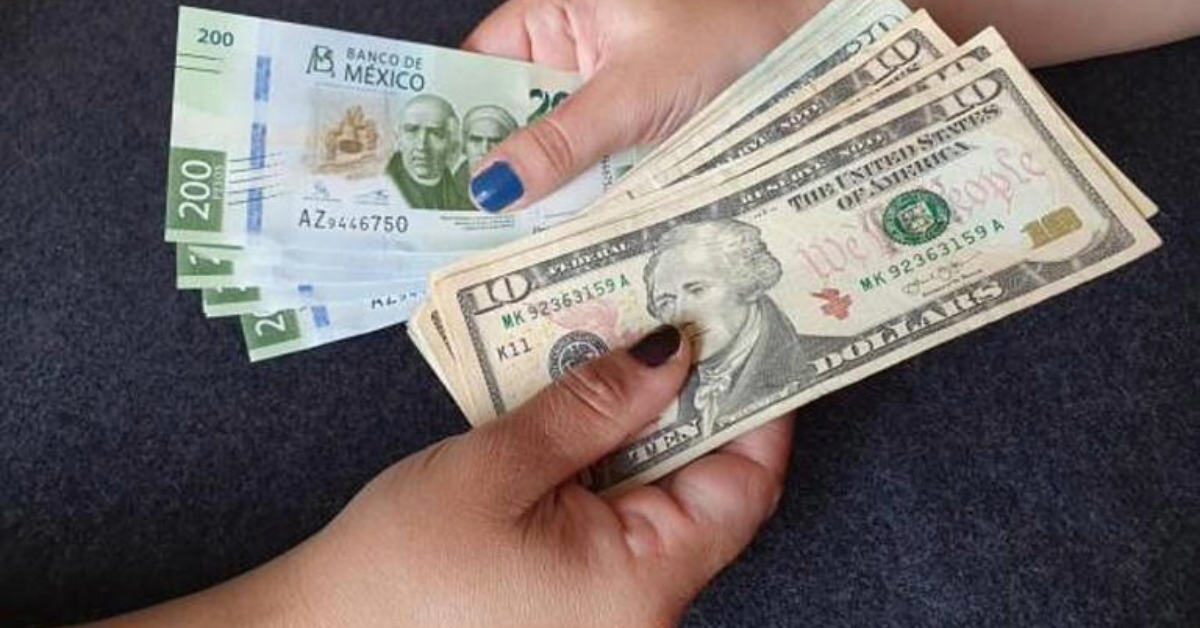The Mexican Peso opened on Tuesday at 19.81 pesos per dollar in international markets, marking an appreciation of 0.78% or 16 cents compared to the previous trading session, according to data from Bloomberg. The peso’s performance comes amid continued volatility in the overnight session, where the exchange rate demonstrated a downward bias. However, despite ongoing challenges in the local economy, the peso has maintained its position below the psychological threshold of 20 pesos per dollar, a level it has resisted breaking in recent days.
Analysts at Momex attributed this stability to the peso’s ability to remain resilient in the face of fluctuating economic conditions. They pointed out that, while local economic activity has shown signs of slowing down, the peso continues to perform well despite modest gains in the U.S. dollar.
Dollar Index and Major Currencies
The U.S. dollar index, which tracks the performance of the greenback against a basket of six major currencies, began the day with a slight appreciation of 0.01%. The euro saw a minor decline of 0.02% against the dollar, while the British pound faced a more notable drop, losing 0.2%.
Currency markets remain sensitive to global economic and political developments, and traders are particularly attuned to any signals that might emerge from the U.S. and Mexico, especially given the political backdrop of Donald Trump’s ongoing protectionist rhetoric, which continues to impact investor sentiment in the region.
Global Stock Market Performance
Global stock markets have been on a three-day winning streak, but Tuesday saw a pause in that momentum, with key indexes showing declines. As companies continue to release their quarterly earnings reports, markets remain cautious.
In Wall Street, futures for major indexes indicated a lower opening, with the Nasdaq seeing the steepest drop, falling by 0.7% in pre-market trading. This suggests that tech-heavy stocks may face a challenging trading day ahead.
Meanwhile, European markets were also down, with the Euro Stoxx 600 reporting a decline of 0.5%. This follows a pattern of mixed results in Asian markets, where Japan’s Nikkei suffered a significant loss of 1.39%, while Hong Kong’s Hang Seng saw a slight gain of 0.1%. These regional variations reflect ongoing uncertainty in the global economic landscape, driven by geopolitical factors and inflationary pressures.
Focus on Mexican Economic Data
This week, investors are keenly awaiting key economic data from Mexico, particularly the release of October’s biweekly inflation report. Inflation remains a critical factor for both the Mexican government and investors, as it influences monetary policy decisions, including potential adjustments to interest rates by the Bank of Mexico. Analysts are closely monitoring this data to better assess the country’s economic trajectory as the year-end approaches.
Adding to the complexity is the political dimension, particularly with regard to the U.S. presidential elections. The proximity of the elections, combined with Trump’s protectionist stance, has caused fluctuations in the peso’s value, as uncertainty about future trade relations between the U.S. and Mexico continues to loom large.
Energy Markets and Crude Oil
In the energy sector, the price of U.S. WTI crude oil, which serves as a benchmark for Mexican crude, rose by 1.0%. This uptick was largely driven by investor concerns over the ongoing conflict in the Middle East, which has heightened supply risk fears. As the geopolitical situation evolves, crude prices are expected to remain volatile, which could have further implications for the Mexican economy, particularly given the country’s reliance on oil exports.
While the Mexican Peso has shown resilience in the face of fluctuating global markets, local economic challenges, and political uncertainty in the U.S., the currency continues to navigate a delicate balance. As the week progresses, the release of inflation data and ongoing political developments will likely shape the peso’s performance, with investors keeping a close eye on both domestic and international factors. For now, the peso’s ability to stay below the 20 pesos per dollar mark will be critical in determining its near-term stability.
Global stock markets, meanwhile, are experiencing a mixed performance as corporate earnings reports are released, and investors remain cautious. With inflation data, geopolitical tensions, and political developments in focus, the coming days will provide further insight into the direction of both the peso and global markets.
The Mexican Peso opened on Tuesday at 19.81 pesos per dollar in international markets, marking an appreciation of 0.78 . . .












